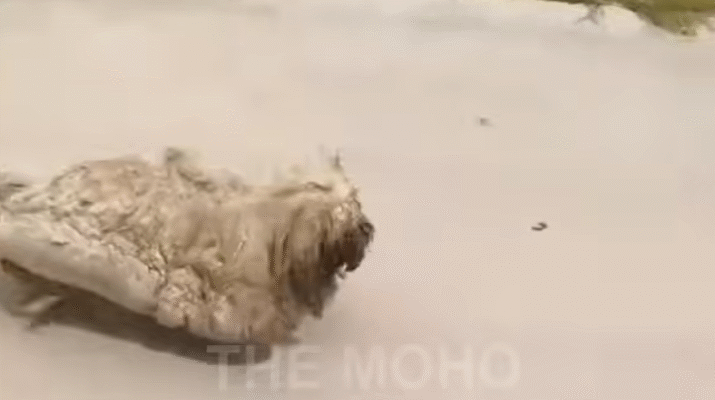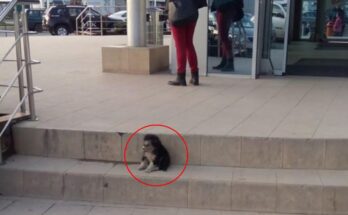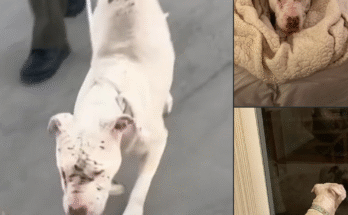At first glance, he was nothing more than a scruffy little creature darting through alleyways and dumpsters, his matted fur the color of dust and oil, blending perfectly into the urban decay around him. People didn’t stop to look twice. Some shouted, some threw things. Others wrinkled their noses in disgust. To them, he was just another filthy stray, probably carrying fleas or disease. His appearance—dirty, tangled, and unkempt—invited fear and rejection. But beneath all that grime was a soul waiting to be seen, and a heart full of warmth and loyalty.
No one knew his name, or where he had come from. The neighborhood kids called him “Shadow” because he seemed to appear and disappear without warning. Adults called him “That Dog”—always in a tone of annoyance or anger. He lived on the streets, scavenging for food in trash bins and sleeping under abandoned cars. His fur, once white, had turned into a grayish-brown mess of knots and dirt. His eyes, though, still sparkled with curiosity and a flicker of hope.
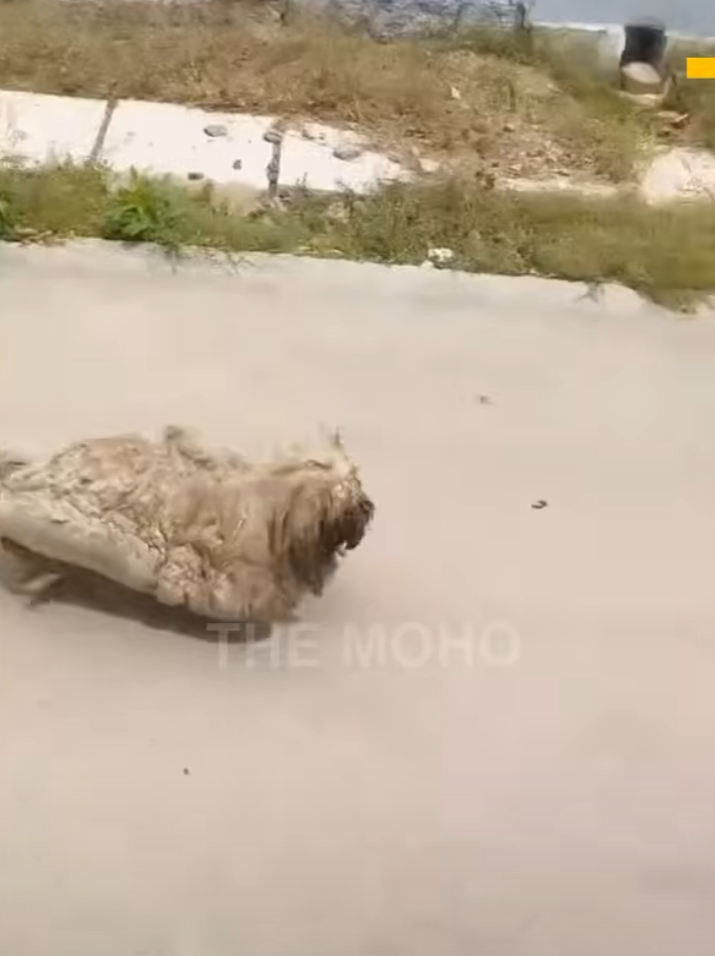
Each day was a struggle. Shadow learned to avoid angry shopkeepers, speeding motorcycles, and cruel teenagers who thought it was funny to chase him with sticks. He’d once tried to approach a woman eating on a park bench, hoping for a scrap. Instead, he got a kick to the ribs. After that, he trusted no one.
Until one rainy evening changed everything.
A young woman named Mia was closing up her flower shop when she heard a strange scratching at the door. Curious, she peeked outside and saw Shadow—soaked to the bone, shivering, his eyes pleading. At first, she hesitated. He looked wild. Untouchable. But something in those eyes pulled her in. She opened the door and gently coaxed him in with a warm voice and a piece of bread.
He didn’t trust her immediately. But he was tired. So very tired.
Over the next few days, Mia did what she could. She gave him food, clean water, and a dry place to sleep in the corner of her shop. She named him Benny. Every time she tried to touch him, he flinched. So she waited. Patiently. She spoke to him kindly, never raising her voice. Slowly, Benny began to let her closer.
The first time Mia brushed his fur, it took nearly two hours. She was shocked at the amount of dirt, leaves, and even twigs caught in it. The tangles were tight and painful, but Benny didn’t protest. He sat there, eyes closed, letting her work through the mess. Beneath the grime, she discovered patches of pure white fur, soft and silky. Benny was beautiful—but no one had taken the time to see it before.
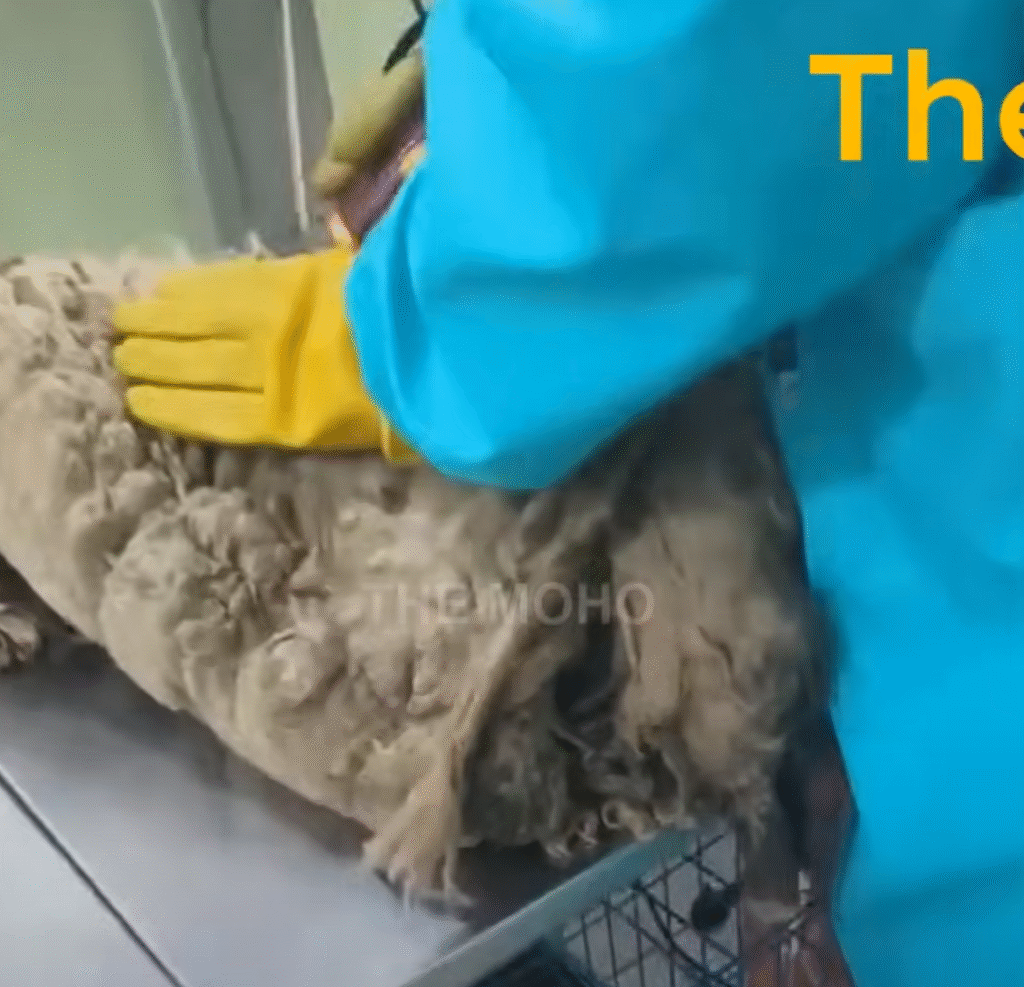
As days turned into weeks, Benny transformed. With every bath, every brushing session, every gentle word, he became more confident. He wagged his tail when Mia came near. He learned to sit, to stay, to fetch. Customers started noticing him in the shop. At first, they were wary—this was the same dirty dog they had seen running the streets, wasn’t it?
But Mia proudly told his story, and suddenly, the very thing that had once repelled people—his dirty, tangled fur—became the symbol of his incredible journey.
Word spread quickly in the neighborhood. Benny became a local celebrity. Children who once feared or chased him now brought him treats. Elderly women stroked his clean fur and cooed lovingly. Even the grumpy shopkeeper across the street began leaving out pieces of chicken. Benny had gone from outcast to hero, from shadow to star.
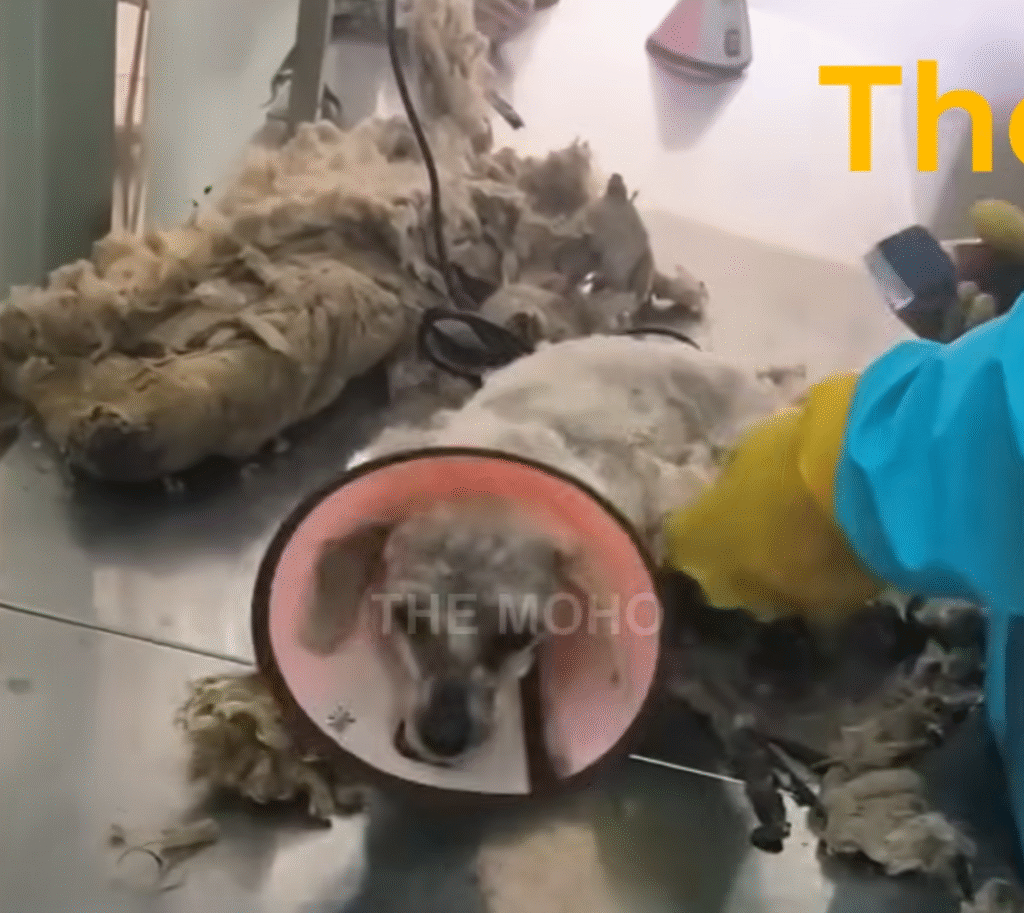
What surprised everyone the most, though, was that Mia never fully trimmed his fur. She kept it long, and while it was always clean and brushed now, she left a few of the natural curls and tufts that reminded everyone of where Benny had come from. It became his signature look—half wild, half refined. His “dirty fur” had become a symbol not of neglect, but of resilience.
People saw themselves in Benny. He was proof that no one should be judged by their appearance, that every soul deserved a second chance. The same fur that once made people chase him away now drew them in. They saw beauty in his imperfection, courage in his scars.
One day, a local journalist wrote a feature story: “From Filthy to Fabulous: Benny the Dog Teaches a City to Love Again.” The article went viral online. Animal shelters reported a spike in adoptions. People were inspired to see past appearances, to open their hearts. Benny’s transformation had done more than save his life—it had touched hundreds more.
And Benny? He didn’t care much for the fame. All he wanted was to sit by Mia’s feet, nuzzle her hand, and nap in the sun. He had found his home. The streets no longer haunted his dreams. The voices of anger had been replaced with laughter and love.
Still, Mia often said that Benny had saved her. Before he came into her life, she’d been lonely, stuck in routine, feeling as though nothing she did made a difference. But caring for Benny gave her purpose, joy, and a new sense of connection with the world. Together, they reminded everyone around them that love—true, patient, unjudging love—can change everything.
So, the next time someone sees a dirty, scared dog on the street and thinks to turn away, they might remember Benny. They might stop, kneel, and see through the fur.
Because sometimes, the messiest ones have the most beautiful stories to tell.
And it all starts with someone willing to look a little closer.
